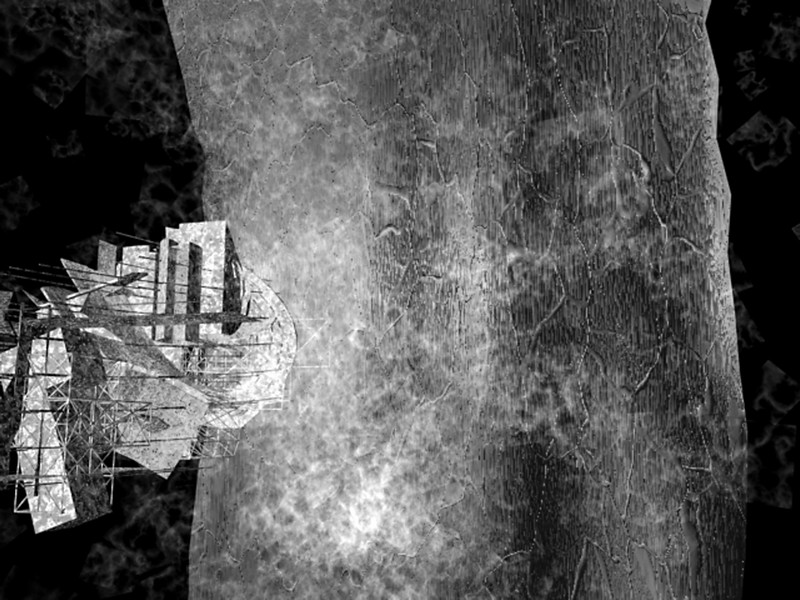2(3) 2008
 |
|
 |
ARCHITECTURE AND MODERN INFORMATION TECHNOLOGIES
ÌÅÆÄÓÍÀÐÎÄÍÛÉ ÝËÅÊÒÐÎÍÍÛÉ ÍÀÓ×ÍÎ-ÎÁÐÀÇÎÂÀÒÅËÜÍÛÉ ÆÓÐÍÀË ÏÎ ÍÀÓ×ÍÎ-ÒÅÕÍÈ×ÅÑÊÈÌ È Ó×ÅÁÍÎ-ÌÅÒÎÄÈ×ÅÑÊÈÌ ÀÑÏÅÊÒÀÌ ÑÎÂÐÅÌÅÍÍÎÃÎ ÀÐÕÈÒÅÊÒÓÐÍÎÃÎ ÎÁÐÀÇÎÂÀÍÈß È ÏÐÎÅÊÒÈÐÎÂÀÍÈß Ñ ÈÑÏÎËÜÇÎÂÀÍÈÅÌ ÂÈÄÅÎ È ÊÎÌÏÜÞÒÅÐÍÛÕ ÒÅÕÍÎËÎÃÈÉ
SAFDE - SADNESS, ANGER, FEAR, DISGUST, ENJOYMENT
ÏÅ×ÀËÜ, ÃÍÅÂ, ÎÏÀÑÅÍÈÅ, ÎÒÂÐÀÙÅÍÈÅ, ÓÄÎÂÎËÜÑÒÂÈÅ
Antonio Serrato-Combe
College of Architecture + Planning, the University of Utah, USA
http://serrato.arch.utah.edu
Introduction
While human factors and emotions are most always considered in architectural design tasks, they are seldom set out as key parameters. Unlike traditional design methodologies that depend on limited experimentation means, animated digital media now offers the expanded opportunity to experiment and visualize items such as smoke, fire, wind, sound, explosions, movement, and other factors that affect emotional aspects of architectural design.
Human emotion is complex. Emotions are mental states that arise spontaneously, rather than through conscious effort. While the experimental studio recognized the Darwinian (Darwin, 1998), Jamesian (James, Mind, 9), Cognitive (Kolb, 1996), Social Constructivist (Berger, 1996) and Neurological perspectives (Dolinina, 2001) for its practical operation, emotions were to be considered as physical expressions, often involuntary, related to feelings perceptions or beliefs about elements, objects or relations between them, in reality or in the imagination. From this point of view, the plan was to approach the studio project looking at emotion as the antithesis of reason. The common phrases “appeal to emotion” and “your emotions have taken over” were used consistently in searching for design solutions that students would feel that they would wish to control but often could not. The ultimate goal was to explore the potential for entanglement or even opposition between will, emotion, and reason.
Process
Following a brief study of the extremely complex issue of human emotion, it was decided to follow the precepts set forth by Ekman (Ekman, 2004) namely that some expressions and their corresponding emotions are universal across human cultures and are not culturally determined. Even cows, as Darwin curiously noted “when they frisk about from pleasure, throw up their tails in a ridiculous fashion”.
The process included the following segments:
1. At the very beginning of the project students picked an emotional attribute such as fear. Then they were challenged to generate abstract spatial constructs linking the given emotion with the spatial construct. The plan was not to arrive at “real” architectural spaces, but to experiment with spatial constructs where items such as special textures or forms would be assembled together in conjunction with environment effects such as wind, smoke, etc. In other words, instead of only experimenting with form generation using digital media, the task involved the production of design situations in the most holistic way possible. Particular emphasis was placed on involving as many factors as possible. This included items such as wind, smoke, potential heat sensations, etc.
|
|
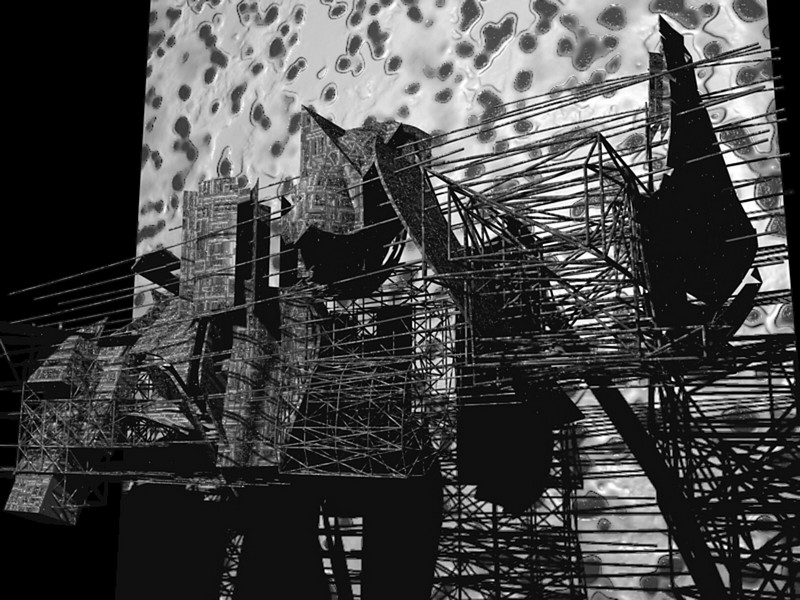 |
| Fig. 1. Frame of a preliminary animation where the feeling of disgust was first explored. The animation lasts 35 seconds. The background with a sickly feeling texture moves as fabric |
2. Immediately after this preliminary task was completed, the group was asked to produce several animation clips. Each clip had to be approximately thirty seconds long. Students were strongly encouraged to experiment with the movement of the digital camera in and around the spatial construct. Playing with situations involving unusual textures, colour combinations, and scale relationships was also highly supported. Wind, smoke, explosions, animated fluids, and the visualization of similar phenomena were given particular attention too.
3. While the purpose of the project was not to engage in profound debates on behavioural theory, students were then asked to review the animations and engage in lively discussions on the dynamic process of architectural expression and why and how emotions motivate and shape the way we feel. The group met weekly to review the video clips and discussions followed focusing on particular emotional reactions. The group noted that certain arrangements of sounds, of lines, of colours, were agreeable, and others the reverse. Additional mental states such as surprise, curiosity, rapture, fear, anger, lust, greed, and the like also surfaced. Certain animated sequences charmed them, and others tired them. In sum, the idea was not to test how emotional and cognitive measurements may correlate within subjects, but to look at how our emotions can be effected by our plans, memories, and ideas about architectural objects and spaces. In other words, the plan was not to arrive at “architectural recipes” that would engender deliberate emotions, but to play with environmental phenomena to see if there was some affective connection.
The weekly reviews also gave students the opportunity to engage in highly charged discussions on what emotions are and how they occur. Some students argued that every spatial construct is in fact a sort of lock, whose wards and springs presuppose specials forms of keys thereby opening particular feelings and sensations. Other students curiously noted special manifestations of emotions. One student animated two steel knife blades with their keen edges crossing each other at right angles, and moving too and fro. The group immediately turned “on edge”, and noted that two emotional branches opened up, one, the unpleasant nervous feeling itself, and the other, the dread that more of it may come later.
|
|
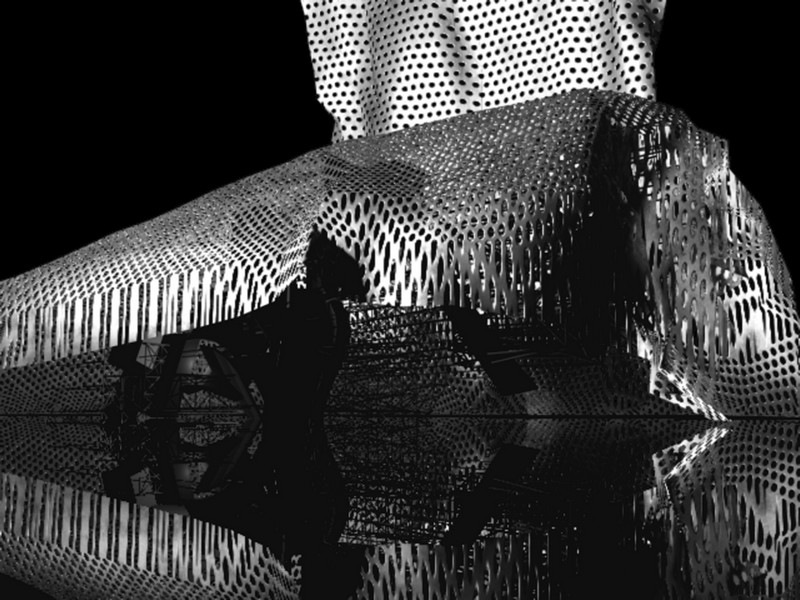 |
| Figure 2. Frame of a preliminary animation where the feeling of sadness was first explored. The animation lasts 35 seconds and reveals a slow disappearance and covering of an abstract item. |
4. The production of animated clips continued to another level, where more sophisticated digital effects were demanded. This particular phase prompted students to augment their digital modelling and rendering skills. They had to generate situations where items had to consider articulated joints, dynamic, kinematics, and/or static conditions. Physics props editors were used to simulate falling objects, collisions, and other dynamic situations.
This phase made students aware that emotion both begins and ends with what we call its effects or manifestations. Most students realized after reviewing the animations several times that concords of sounds, of colours, of lines, of objects, logical consistencies, and teleological fitness affected them with a pleasure that seemed ingrained in the very form of the representation itself. Some argued that a geometrical demonstration could be as “pretty” and moving through some weird space as “neat” as a simple drawing or a tune, although the prettiness and neatness seemed to be a pure matter of sensation at one point, and have nothing to do with sensation at another point. Some even concluded that some individuals seem to have a genuinely “cerebral” form of pleasure and displeasure, apparently not agreeing in their architectural mode of creation with the so-called “standard” emotions normally dealt with in architectural design studios.
It is not possible to list and present the myriad issues this particular phase brought to the group. However, it must be said that at the end, all students concluded that their level of discussion and debate on issues regarding perception, insight, observation and sensitivity had greatly been amplified.
|
|
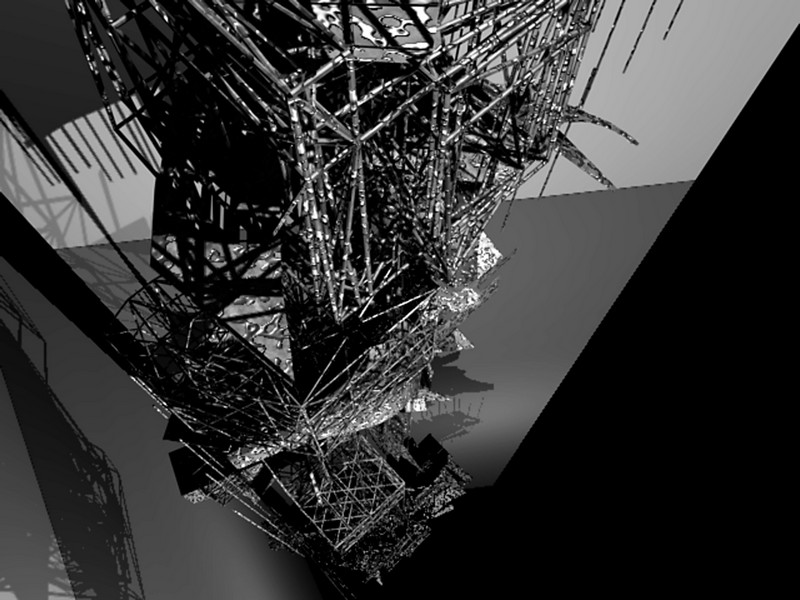 |
| Fig. 3. Frame of a preliminary animation where the feeling of enjoyment was first explored. The animation lasts 30 seconds and portrays unusual movement of the digital camera through a complex structure. |
Conclusions
While the studio only produced a few nuggets in terms of advances in behavioural studies and theory, the experiment was extremely successful in making students aware of how spaces and constructs within them elicit particular emotions. From a pedagogical perspective, it clearly showed that animations are excellent mechanisms to explore a variety of effects that normally are not visualized in traditional architectural studio settings. Some of the most salient learning experiences included:
1. Framing. This item was a major determinant. The way a space is viewed or framed made some spaces feel dangerous while framing changes on the same location made them feel placid. Likewise, clever framing, still or while moving, did bring about not one but many emotions, ranging from great expectations to total boredom. Framing also helped to construct or compose spaces.
2. Movement. Any kind of physical movement in a visualization elicited strong reactions. While not a great discovery, this item nevertheless underscored the fact that effects like moving water or banners floating in the wind are items we as architects should always consider. Moreover, there was a realization that the concept of movement provides numerous opportunities for additional exploration: the act of moving, the way of moving, the effort to achieve something, moving parts, suggesting motion, rhythm, etc.
|
|
|
| Fig. 4. Frame of a preliminary animation where the feeling of disgust was first explored. The animation lasts 30 seconds and reveals disturbing colours and textures applied to organic forms. |
3. The need for “architectural plots”. Visualizations of items or spaces where plots were not clearly discernible were deemed unattractive and uninviting. Conversely, those with some sort of plot were reviewed quite positively and seen as appealing. Actually, this quality proved to be fundamental in provoking emotions. There simply had to be some kind of “plot” or narrative behind the architecture. Otherwise, there was no emotion attached. In addition, plots implied episodes of a story. And this immediately prompted to devise the sequence of events in the story or script.
4. Architectural surprise was also essential. Again, this was not an amazing find. However, students learned a lot on how architectural surprise can be integrated and/or generated. Within this category students discovered a number of subtle variations. For example while some surprise constructs ended in amazement, others finished in shock and fright.
5. Colour in building surfaces as well as contrast and texture were extremely difficult to manipulate. Without getting in complex valence, arousal and control (dominance) studies, this observation clearly underscored the problem of feature-based affect representation. Which colour combination, texture, or temporal effect is to be related to happiness, disgust, or fear? The group did not find a clear answer. However, many agreed that unless a person actually laughs at the neatness of a particular setting, or tingles at the perfection of a musical background tied to an environment, the mental condition is more allied to judgments of making the right decision than to anything else.
6. Many other environmental effects were explored too. However, smoke and its variants haze and fog were deemed highly significant. In most instances they were associated with fear, joy and sadness. Students found that these phenomena could be devastatingly beautiful.
At the end, the videos were shown to several audiences on a large screen with multi-channel surround sound. The public found its way through wind tunnels, incredible high rises, a maze of grapefruit-sized plastic spheres and oxygen-making machines. Not only the student creators learned how to create amazing environments, but also realized how critical the manipulation of emotion is in architecture.
They all had a blast!
|
|
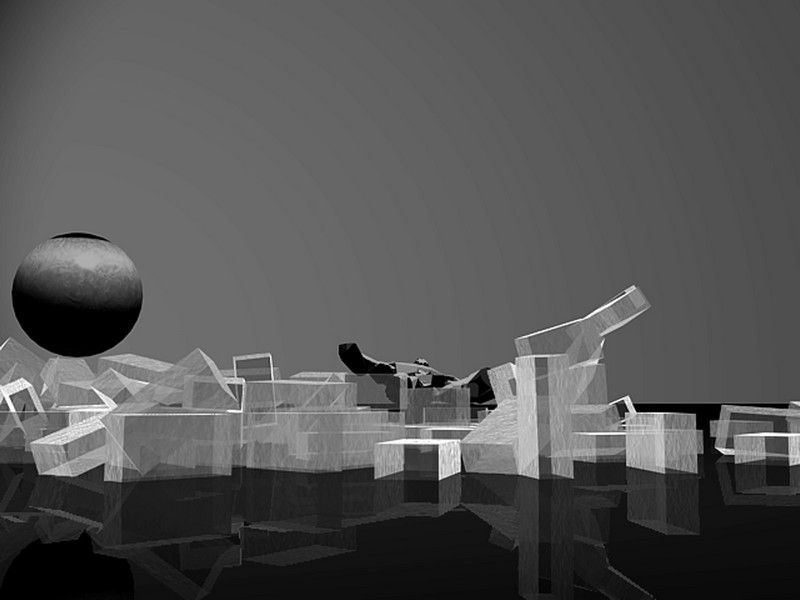 |
| Fig. 5. Frame of a preliminary animation where the feeling of anger was first explored. The animation lasts 35 seconds and shows several items being crushed while a humanoid in the background slowly falls to the ground. Click, please part1 and then part 2, if you wish download and look preliminary animations to Fig. 1 – Fig. 5. |
Part 1
Part 2
References
Berger, Peter Ludwig: 1966, The Social Construction of Reality: A Treatise in the Sociology of Knowledge, Anchor Books, Garden City, NY
Darwin, Charles: 1998, The Expression of the Emotions in Man and Animals, Oxford University Press, 3rd Ed., Oxford
Dolinina, Inga B: 2001, Theoretical and Empirical Reasoning Modes from the Neurological Perspective, in Argumentation, Springer Netherlands, Vol. 15, Number 2
Ekman, P.: 2004, Emotions Revealed, Weindelfeld & Nicholson, NY
James, William, What is an Emotion? , Mind 9, pp.188-205
Kolb, B. & Whishaw: 1996, I. Q. Fundamentals of Human Neuropsychology, Worth Publishers, Lethbridge















